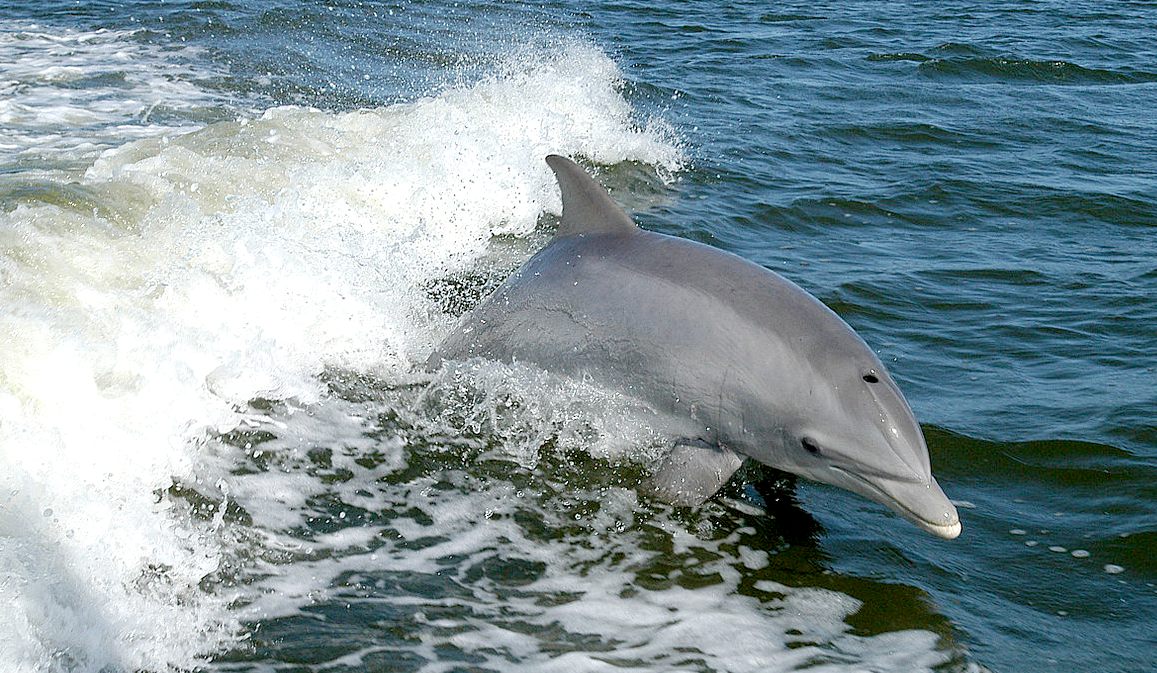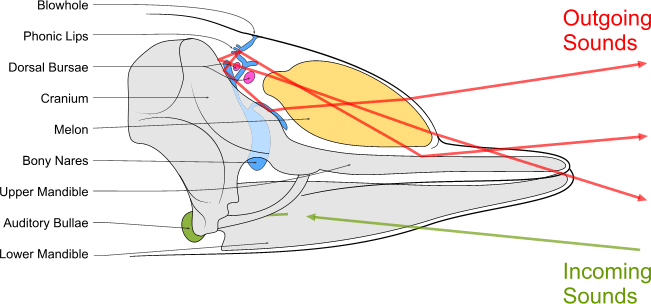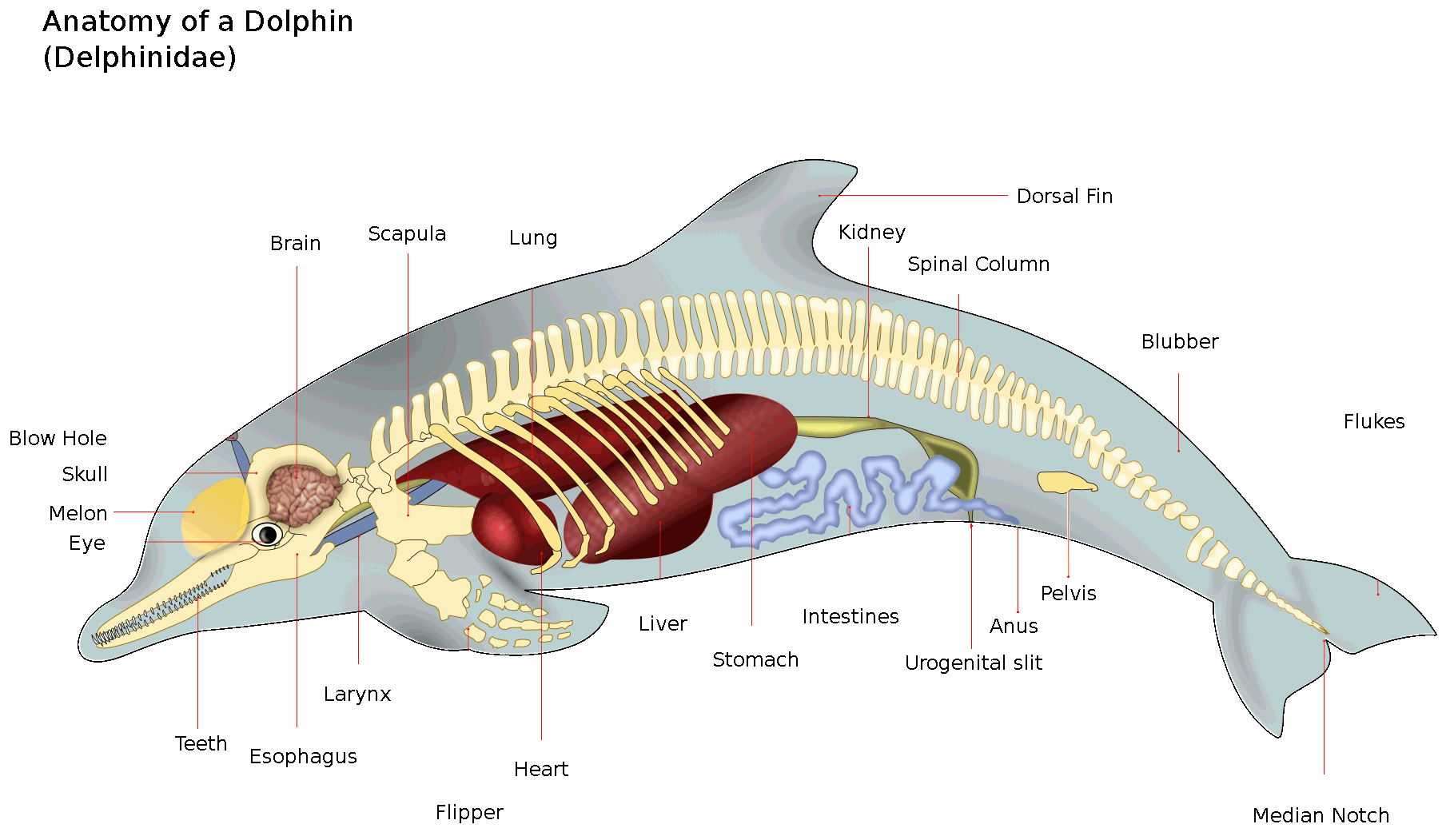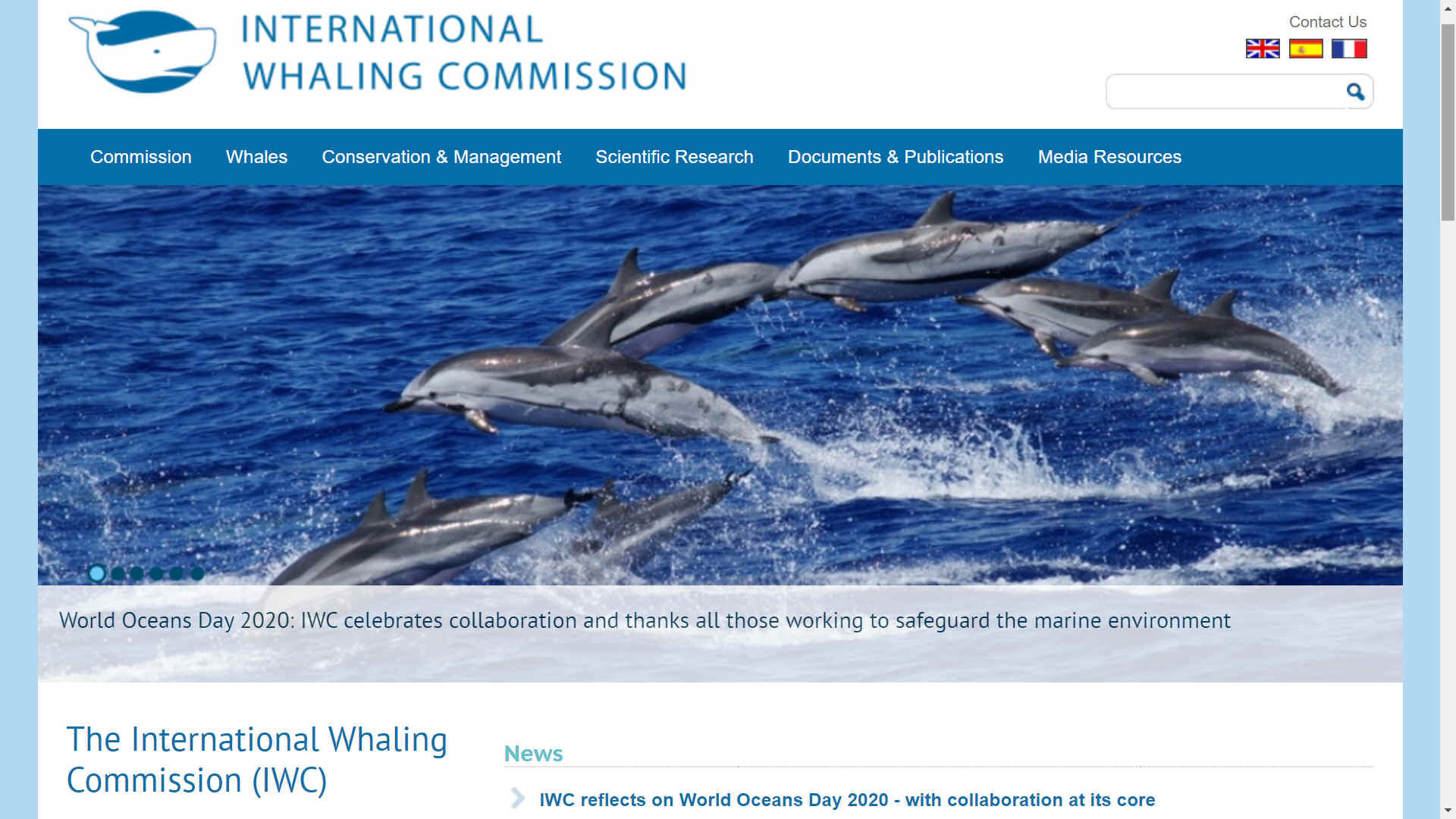
Probably the best know
example of a toothed cetacean is the bottlenose dolphin. The largest
toothed whale is the sperm whale, lesser known, except for being famous
as Moby-Dick, in Herman
Melville's classic.
Cetaceans, (order Cetacea),
include any member of an entirely aquatic group of mammals commonly known as
whales. Mammals breath air using lungs developed on land at some point
in their evolution. Fish use gills to obtain oxygen from seawater. This
is a huge distinction, where cetaceans have significantly larger brains
and intelligence.
There are baleen
whales that have no teeth, and there are toothed whales such as dolphins,
killer (orca),
and the much larger sperm whale, that have teeth. The two groups are thought to have diverged around 34 million years ago
(mya).
Toothed whales
are called odontocetes or Odontoceti. They are a parvorder of cetaceans that includes dolphins, porpoises, and all other whales possessing teeth, such as the beaked whales and sperm whales. Seventy-three species of toothed whales are described. They are one of two living groups of cetaceans, the other being the baleen whales (Mysticeti), which have baleen instead of teeth.
Toothed whales range in size from the 4.5 ft (1.4 m) and 120 lb (54 kg) vaquita to the 20 m (66 ft) and 55 t (61-short-ton) sperm whale. Several species of odontocetes exhibit sexual dimorphism, in that there are size or other morphological differences between females and males. They have streamlined bodies and two limbs that are modified into flippers. Some can travel at up to 20 knots.
Odontocetes have conical teeth designed for catching
fish or
squid. They have well-developed hearing, that is well adapted for both air and water, so much so that some can survive even if they are blind. Some species are well adapted for diving to great depths. Almost all have a layer of fat, or
blubber, under the skin to keep warm in the cold water, with the exception of river dolphins.
Toothed whales consist of some of the most widespread mammals, but some, as with the vaquita, are restricted to certain areas. Odontocetes feed largely on fish and squid, but a few, like the killer whale, feed on mammals, such as pinnipeds. Males typically mate with multiple females every year, but females only mate every two to three years, making them polygynous. Calves are typically born in the spring and summer, and females bear the responsibility for raising them, but more sociable species rely on the family group to care for calves. Many species, mainly dolphins, are highly sociable, with some pods reaching over a thousand individuals.
Once hunted for their products, cetaceans are now protected by international law. Some species are attributed with high levels of intelligence. At the 2012 meeting of the American Association for the Advancement of Science, support was reiterated for a cetacean bill of rights, listing cetaceans as nonhuman persons. Besides whaling and drive hunting, they also face threats from bycatch and marine pollution. The baiji, for example, is considered functionally extinct by the IUCN, with the last sighting in 2004, due to heavy pollution to the Yangtze River.
Whales occasionally feature in literature and film, as in the great white sperm whale of
Herman
Melville's Moby
Dick. Small odontocetes, mainly dolphins, are kept in captivity and trained to perform tricks. Whale watching has become a form of tourism around the world.

SONAR
Apart
from teeth, one other important distinction is sonar.
Toothed whales are capable of making a broad range of sounds using nasal airsacs located just below the blowhole. Roughly three categories of sounds can be identified: frequency-modulated whistles, burst-pulsed sounds, and clicks. Dolphins communicate with whistle-like sounds produced by vibrating connective tissue, similar to the way human vocal cords function, and through burst-pulsed sounds, though the nature and extent of that ability is not known. The clicks are directional and are used for echolocation, often occurring in a short series called a click train. The click rate increases when approaching an object of interest. Toothed whale biosonar clicks are amongst the loudest sounds made by marine animals.
The cetacean ear has specific adaptations to the marine environment. In humans, the middle ear works as an impedance equalizer between the outside air's low impedance and the cochlear fluid's high impedance. In whales, and other marine mammals, no great difference exists between the outer and inner environments. Instead of sound passing through the outer ear to the middle ear, whales receive sound through the throat, from which it passes through a low-impedance, fat-filled cavity to the inner ear. The ear is acoustically isolated from the skull by air-filled sinus pockets, which allow for greater directional hearing underwater.
Odontocetes send out high-frequency clicks from an organ known as a melon. This melon consists of fat, and the skull of any such creature containing a melon will have a large depression. The melon size varies between species, the bigger it is, the more dependent they are on it. A beaked whale, for example, has a small bulge sitting on top of its skull, whereas a sperm whale's head is filled mainly with the melon.
Bottlenose dolphins have been found to have signature whistles unique to a specific individual. These whistles are used for dolphins to communicate with one another by identifying an individual. It can be seen as the dolphin equivalent of a name for humans. Because dolphins are generally associated in groups, communication is necessary. Signal masking is when other similar sounds (conspecific sounds) interfere with the original acoustic sound. In larger groups, individual whistle sounds are less prominent. Dolphins tend to travel in pods, in which the groups of dolphins range from two to 1000.


IWC is a voluntary
international organization and is not backed up by treaty, therefore,
the IWC has substantial practical limitations on its authority. First,
any member countries are free to simply leave the organization and
declare themselves not bound by it if they so wish. Second, any member
state may opt out of any specific IWC regulation by lodging a formal
objection to it within 90 days of the regulation coming into force (such
provisions are common in international agreements, on the logic that it
is preferable to have parties remain within the agreements than opt out
altogether). Third, the IWC has no ability to enforce any of its
decisions through penalty imposition.
Please use our
A-Z INDEX to
navigate this site



